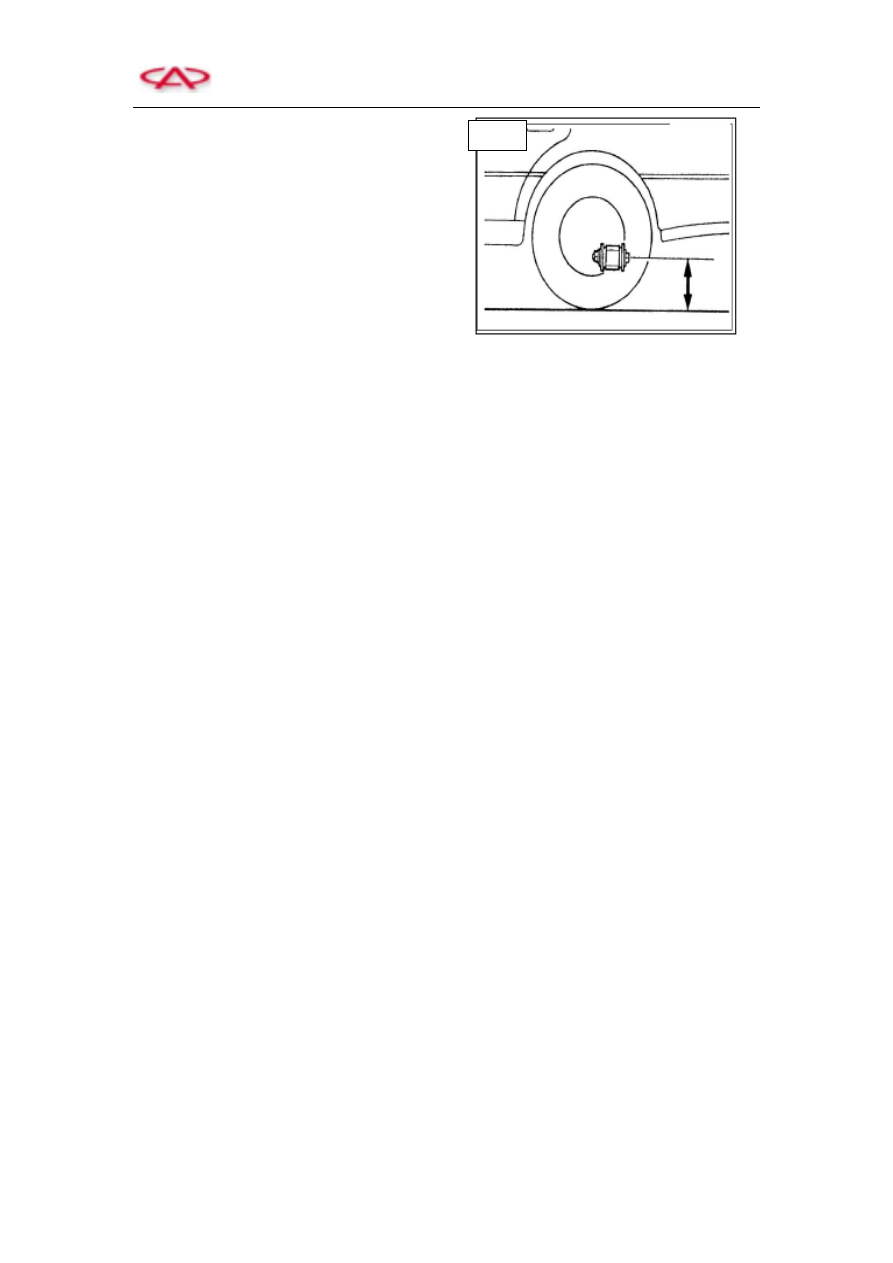Chery Tiggo T11 LHD. Manual - part 32

T11 Service Manual Chassis System
b. Rear measuring point
Check the height between the ground and the
connecting bolt that joins the rear axle to the
shock absorber. The body height of the left and
right wheels shall be identical.
Note: Prior to checking wheel alignment, firstly adjust the vehicle to specified height.
If vehicle height does not conform to standard, inspect the front and rear suspension of the vehicle
to confirm whether there exists damage or deformation.
c. Inspect wheel bearing clearance, and replace front-wheel bearing if necessary.
d. Inspect the status of wheel rim and tire.
e. Inspect the loosening level of steering linkage and ball joint.
f. Park the vehicle (without luggage or passengers) on a level ground.
g. Shake the wheel and inspect the loosening status of front suspension.
h. Inspect shock absorber to ensure its normal operation.
a) Inspect and avoid oil leakage.
b) Inspect the mounting bushing to avoid wear.
c) Inspect the damping force of shock absorber, and replace if not conform to
specification.
Note: fuel tank shall be half-full. Cooling water in radiator and the engine oil shall be at specified
height. Tire jack and driver's tools shall be placed at designated location.
Rear